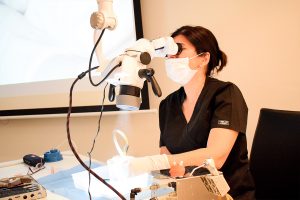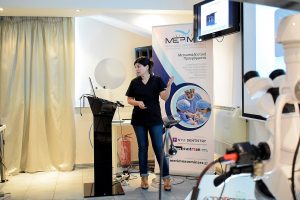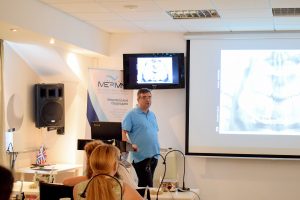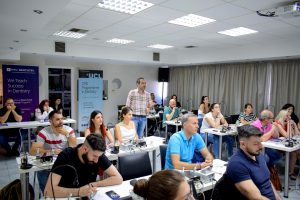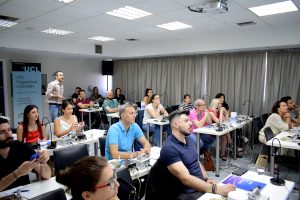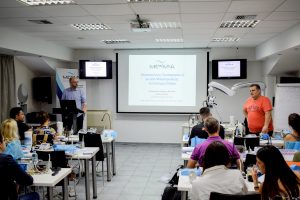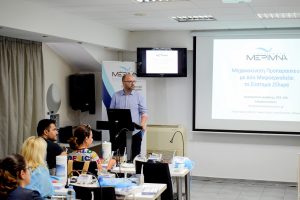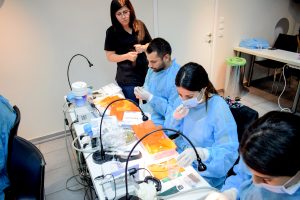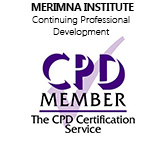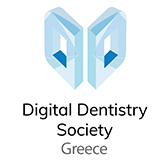Τhe aim of this course is the presentation and analysis of diagnostic and therapeutic problems related to Endodontics and familiarization of the dentist with the chemo-mechanical preparation and the three-dimensional obturation of the root canal system. Merimna Institute invites for first time three Endo specialists that will offer all their knowledge and participate interactively during the workshops.
Every delegate will practice in two diferrent preparation systems and two different root canal obturation systems.
Especially trainig will be take place by microscopes and digital X-rays.
Dates : June 6-7, 2026
Fees : 450 € (includes: Handout, Coffee breaks, Lunch, Certificate of attendance)
Necessary materials : The participants must have with them extracted teeth from all tooth types in order to be well-trained even in more difficult and challenging cases. (incissor, canine , premolar, molar)
Introduction
Clinical Endodontology was recently dominated by plenty of technical developments related to new equipment, modern tools and materials and innovative techniques in order to provide more comfort to the dentist in the treatment process. The crucial role of microbes and by-products of their metabolism in the development of apical periodontitis has been well-documented. Therefore, endodontic treatment should be considered as the clinical treatment of a microbial aetiology disease aiming to eliminate bacteria and prevent from re-infection. The achievement of those objectives requires thorough mechanical preparation, combined with appropriate irrigants, intracanal antiseptics and three-dimensional obturation of root canal system.
The aim of this course is the presentation and analysis of diagnostic and therapeutic problems related to Endodontics and familiarization of the dentist with the chemo-mechanical preparation and the three-dimensional obturation of the root canal system. In selected clinical cases, modern treatment protocols will be presented. Modern scientific data about specific fields in Endodontics will be reviewed through the analysis of these cases.
The diagnostic approach to pulpal and periapical disease is usually a complex process, that requires combination analysis of symptoms and radiographic findings. In particular, the diagnosis is based on data obtained from medical and dental history, responses to pulp sensibility tests and radiographic interpretation. Clinical examination and modern imaging techniques contribute significantly to the aforementioned goals. As part of this presentation, a brief reference to symptoms and signs of pulpal and periapical diseases and presentation of the modern classification of those diseases will be done.
A prerequisite of proper chemo-mechanical preparation and obturation of root canals is the knowledge of the morphology the root canal system of the tooth. With the development of modern research protocols, it is now evitable for the clinical dentist to display and analyze specific morphological characteristics of the root canal system of specific tooth types. Through the presentation of contemporary studies, concerns related to the number of root canals, the relationship between them, and the shape and location of root canal orifices will be analyzed.
Root canal preparation is of utmost interest. It is a process truly laborious, but also crucial for the successful completion of root canal treatment without iatrogenic complications.
Particular emphasis is placed on the use of rotary endodontic files, so that the clinician can perform adequately even in the most challenging morphologies. Clinical protocols of engine-driven endodontic file systems will be presented in detail, in order to provide the skill required for everyday use of rotary instrumentation.
Irrigation of the root canal system is a matter of daily clinical practice in endodontics. A variety of solutions and regimens have been proposed and investigated thoroughly. Yet, there are aspects of irrigation that are still described and taught mainly from empirical data. A modern approach to irrigants and irrigating techniques will be attempted via a scientifically based overview of the irrigation protocols during mechanical instrumentation. Issues regarding the activation of irrigation solutions, the removal of smear layer, and the use of chelating agents and protocols of final irrigation in Endodontics will be discussed.
Modern views on the techniques, materials and systems for three-dimensional obturation of system root canals will also be analyzed. Specifically, the aforementioned techniques may be classified into two categories:
1) techniques based on cold lateral condensation of gutta-percha points and
2) techniques based on warm vertical compaction of gutta-percha. It is necessary to know and use at least one warm technique in order to be used in appropriate cases.
It is essential not only to report and analyze these fields of the endontic science from a theoretical perspective, but also from the practical one, through clinical cases and practice course.
The participants must have with them extracted teeth from all tooth types in order to be well-trained even in more difficult and challenging cases.
 Christos Dandakis
Christos Dandakis
He was born in 1965 in Alexandroupolis. Bachelor of Dentistry in 1991. He worked as a dentist in Germany until 1995. Graduate of program of post-graduate studies, School of Dentistry of Aristotle University of Thessaloniki, in the department of Endodontology. Research Associate of the Greek Society Continuing Dental Education.
Participate in seminars as a trainer in the field of Endodontics. Maintains a private practice in Thessaloniki with exclusive focus on Endodontology. Presentations and attendance at international conferences and symposia, as well as publications in Greek and international journals on the field of Endodontology.
 Dr. Mary Kalyva
Dr. Mary KalyvaLecturer of Endodontology, School of Dentistry, European University Cyprus
Mary Kalyva was born in Athens in 1974. She studied at the Department of Dentistry, School of Health Sciences, National and Kapodistrian University of Athens, graduating in 1998.
In 2001, she completed the second cycle of the two-year postgraduate program in Endodontology at the Aristotle University of Thessaloniki’s Department of Dentistry.
In 2010, she earned her Doctorate in Endodontology with a dissertation titled “The Role of Transforming Growth Factor β1 (TGF-β1) in Dental Pulp Repair: An Experimental Study,” which was published the same year in the International Endodontic Journal.
Since September 2022, she has served as a Lecturer in Endodontology at the School of Dentistry, European University Cyprus. Her academic contributions include publications in international journals, participation in conferences, and teaching roles in undergraduate and postgraduate programs at both the Aristotle University of Thessaloniki and the European University of Cyprus.
Professional Affiliations:
Member of the Hellenic Endodontic Society (since 2002).
Member of the International Association of Dental Traumatology (IADT) (since 2024).
Member of the Hellenic Association of Endodontists (since 2018), where she held roles including Secretary of the Board of Directors (2019–2021), Board Member (2021–2022), and member of the Scientific Committee (2022–present).
Professionally, she has practiced dentistry privately since 2002 and has specialized exclusively in microscopic endodontics since 2007.
 Stamatina Passalidou
Stamatina Passalidou
Stamatina Passalidou is borned and raised in Thessaloniki, Greece, where she was graduated from the Experimental School of Aristotle University of Thessaloniki. She was entered first the Dental School of Aristotle University of Athens, she was named an ensign of the Hellenic Navy. She has served in several positions as a military dentist before she entered the 3-years Master of Science in Endodontlology in the University in Ghent, Belgium (2011-2014). During her studies , she has worked in dental clinics in Antwerp and Brussels as a general practitioner with special interest in Endodontics. Since her return to Athens, she has worked in dental clinics in Luxemburg and in Athens as an endodontist. She is now ahead of the Endodontic Department in Athens Naval Hospital and she has founded Athens Endo House, a specialized endodontic clinic.
 Dimitra Sakka
Dimitra Sakka
I was born in Karditsa in 1992. I obtained my undergraduate degree in National Kapodistrian University of Athens, School of Dentistry, Greece (2010-2015). Afterwards I worked as a general dentist while i was also an associate in the department of Endodontics at the University of Athens. I completed my master’s degree in Endodontics in the Aristotle University of Thessaloniki over a three-year full-time course (MSc). All these years she has been working as an endodontist and has also attended many international congresses and published research papers in scientific medical journals. The research field of my interest is “Regenerative Endodontics”. The subject of my thesis was “Comparative evaluation of the therapeutic potential of two platelet concentrates related to regenerative endodontics”, which was published in the International Journal of Dentristry and Oral Health, March of 2020. Since 2020 I live in Athens and work as an associate endodontist with Dr Mary Paraskevopoulou in her private practice, limited to Endodontics.
 Konstantinos Kalogeropoulos
Konstantinos Kalogeropoulos
Konstantinos Kalogeropoulos graduated from Athens Dental School in 2005. He did his 3 years post graduate studies in the same University and received a Master of Science in Endodontics. He maintains a private practice limited to Endodontics in Athens, Greece since 2008. He has been affiliated with the undergraduate and postgraduate Endodontics department and the Continuous Education program and he lectures both nationally and internationally. His articles are clinically oriented and his clinical cases have been published in endodontic journals and text books around the world.
 As.Prof. Eleftherios Terry R. Farmakis
As.Prof. Eleftherios Terry R. Farmakis DDS, MSc, PhD
He was born in Canada, returned to Greece in a young age, and graduated in 1991 from the Dental School, Athens, Greece (National and Kapodistrian University of Athens, Greece – NKUA). In 1993, he completed his Clinical Specialty in Endodontics, along with his MDSc, and in 2005 he completed the requirements for his PhD Thesis, in the same institution. In 2009 he became Faculty in NKUA, evolving ranks through the years. He has numerous publications, invited lectures and serves as Reviewer in Greek and International Journals. Recently he was elected President of the Hellenic Society of Oral Laser Applications – HELSOLA.
 Ioanna Siska
Ioanna SiskaMaxillofacial Radiologist
Ioanna Siska was born in Chios and graduated from the Aristotle University of Thessaloniki (AUTH) Dental School and the Military School of Officer Corps (SSAS) (2005). She completed her postgraduate education with a Master’s Degree in Oral Diagnostics and Maxillofacial Radiology from the University of Athens Dental School (2014), while she is currently a PhD candidate at the Faculty of Dentistry of Aristotle University of Thessaloniki (AUTH). She is the Head of the Dental Radiology Department of the 251 General Air Force Hospital. In the private sector, she works at a number of diagnostic centers as a maxillofacial radiologist. She also specializes in training of diagnostic centers personnel on the use of Cone Beam Computed Tomography
1. Biology of pulp and periapical tissues.
2. Pathology of pulp and periapical tissues.
3. Diagnosis-Differential diagnosis.
4. Diagnostic tools.
5. Magnification tools (Dental Operative Microscope).
6. Managing of dental emergencies.
7. Treatment plan. Evaluation of endodontic prognostic factors prior to restoration.
8. Discussion-considerations.
B. Root canal anatomy
C. Morphology of root canal system
D. Pulp chamber access
1. Rubber dam isolation.
2. Disinfection.
3. Burs/instruments for access cavity preparation.
4. Objectives, guidelines and rules for access cavity preparation.
5. Iatrogenic errors in access cavity preparation.
6. Discussion-considerations.
E. Practice training
1. Rubber dam placement.
2. Access cavity preparation.
3. Rules for improvement of access cavity preparation.
4. Location and negotiation of root canal orifices.
• Debridement with rotary nickel-titanium instruments
1. Scientific documentation.
2. Modern equipment.
3. Shape memory of rotary files.
4. Apex locators.
5. Work length estimation.
6. Root canal preparation-clinical protocols.
7. Determination of apical enlargement.
8. Clinical cases.
9. Instrument fracture. When and why?
• Irrigation
1. Irrigation methods.
2. Activation of irrigation solutions.
3. Gel or solution. Differences, advantages and drawbacks.
4. Smear layer removal.
5. Dentin conditioners.
6. Irrigation protocols in engine-driven instrumentation.
7. Discussion-considerations.
G. Practice training
1. Modern equipment of engine-driven root canal instrumentation.
2. Familiarization with endodontic motor systems.
3. Root canal shaping.
4. Irrigation protocols-activation of irrigation solutions.
5. Determination of apical enlargement.
6. Discussion-considerations.
H. Root canal obturation
1. Three-dimensional root canal obturation.
2. Obturation techniques/materials/devices.
3. Efficacy of different combinations of them.
4. Discussion-considerations
I Practice training
Practice training with modern materials/devices and with at least 2 representative obturation techniques



